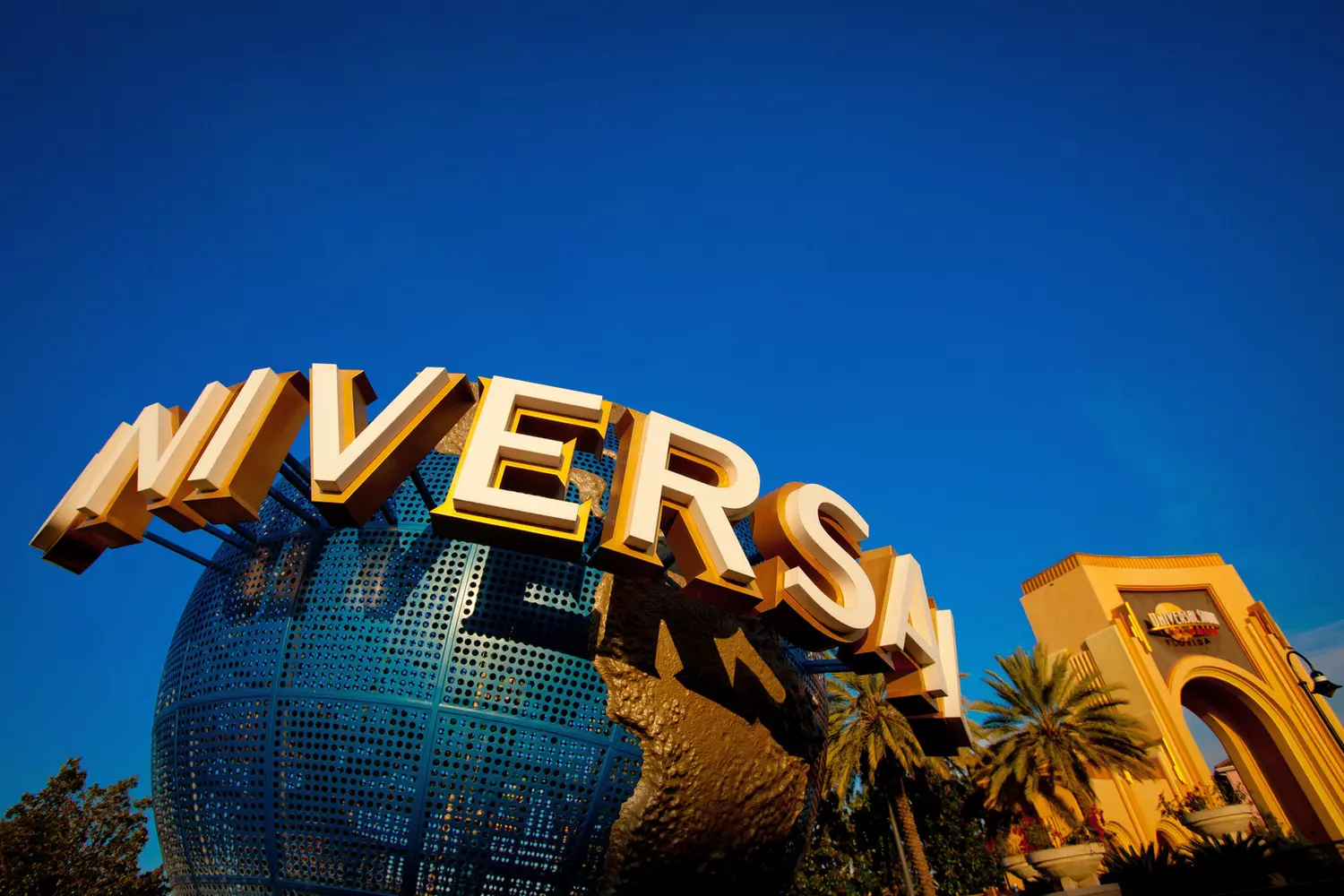The story of Bill Gates is not just the biography of a successful entrepreneur. It is the tale of a person who combined ideas, persistence, and faith in technology to reshape the very logic of human progress.
In the mid-1970s, when computers were expensive, bulky machines for scientists and the military, young Gates already envisioned a future where they would be in every home and office. He dreamed of making technology as commonplace as electricity — and he succeeded.
He didn’t just create Microsoft — he built an entire ecosystem where billions of people work, learn, communicate, and create every day. The world we live in today — with laptops, smartphones, software, and cloud data — largely grew from ideas born in the mind of a determined Harvard student.
“I’ve always believed that technology should be a bridge, not a wall,” Gates said.
And that bridge, he built. Between humans and machines, between ideas and possibilities, between the past and the future.
But Gates is not just about code and screens. It’s about the evolution of a person: from a programming genius to a wise philanthropist who devoted the second half of his life not to profit, but to solving global human challenges.
He went from being a teenager writing his first programs late at night in a school computer club to someone investing billions to combat disease and inequality. His life is a living illustration of how intelligence, perseverance, and belief in an idea can rewrite the world’s script.
Perhaps that is why Bill Gates’ story never gets old. It inspires new generations of dreamers, engineers, students, and entrepreneurs — all who believe that a single idea, executed at the right time, can change everything.
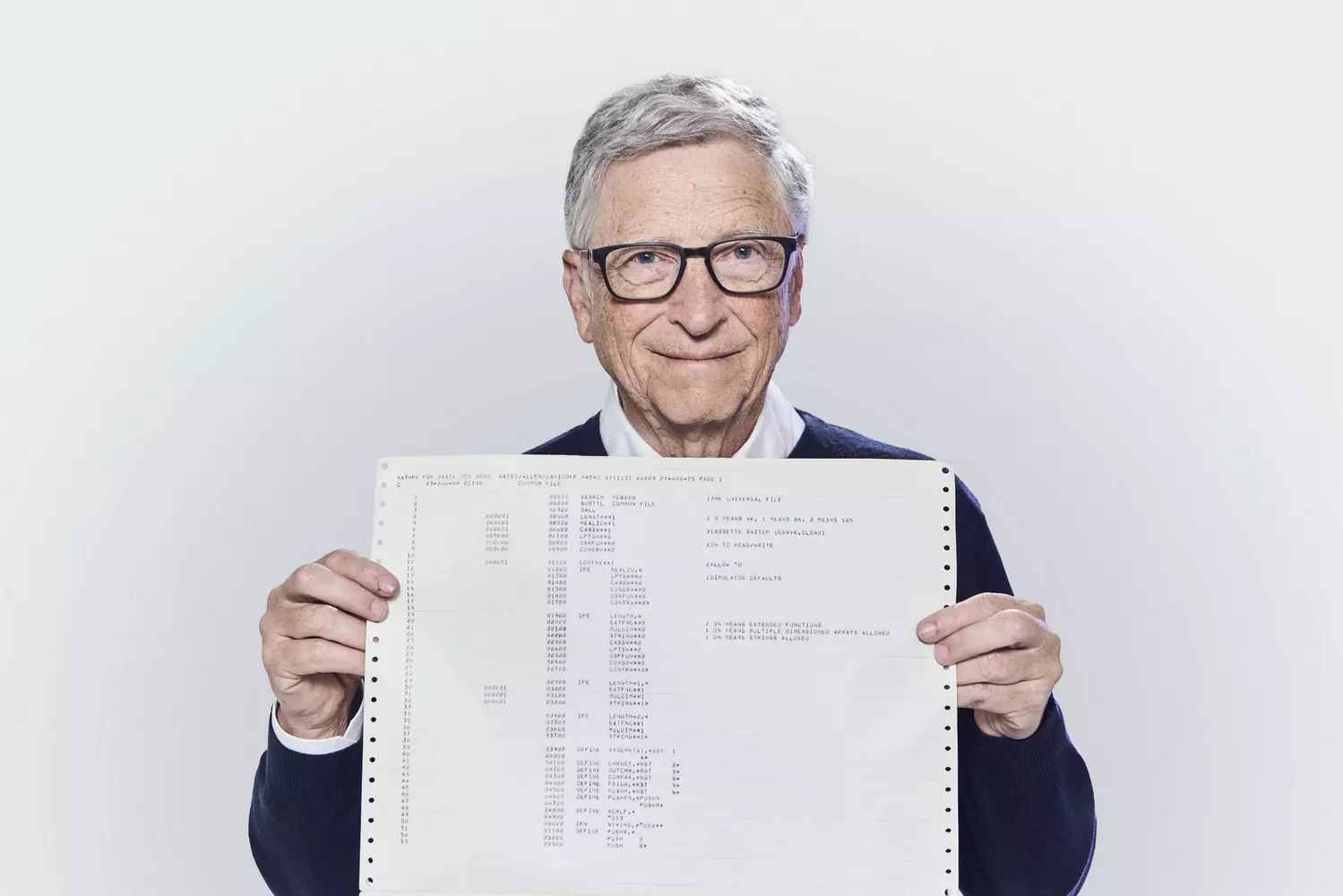
"Success is a lousy teacher. It makes smart people think they can’t lose." — Bill Gates
Young coder from Seattle: how it all began
The future Microsoft founder was born on October 28, 1955, in Seattle, Washington. Surrounded by mountains and pine trees, the city exuded calm, but the Gates household buzzed with intellect and ambition. His father, William Gates II, was a respected lawyer, and his mother, Mary Maxwell Gates, taught at a school and was active in the community. The family upheld strict but fair rules, valuing education, diligence, and responsibility.
From an early age, Bill stood out for his extraordinary curiosity. He didn’t just ask questions — he sought to understand the essence of everything he saw. While other children built sandcastles, Bill wondered why sand falls at a certain angle. He could spend hours with books, especially on mathematics, logic, and the history of inventions. His parents even limited his bedtime reading because he could stay engrossed until morning.
From the very beginning, his world was one of ideas and patterns. Everything had to have an explanation, and if it didn’t, Bill felt it was his duty to find it.
- 01. The First Spark — a Computer That Changed Everything
At 13, Bill’s parents made a pivotal decision: they enrolled him in the private Lakeside School, known for its progressive approach to education. This choice proved fateful. It was there that Bill first encountered the “miracle of technology” — a Teletype Model 33 terminal connected to a massive computer via a phone line.
For a 1960s teenager, it was like meeting an alien. The machine could execute commands, print responses, and store information. Gates instantly realized this was a tool for the future.
The school provided limited computer time, and Bill used every minute. Along with a few classmates, including Paul Allen, his future Microsoft co-founder, he practically lived at the terminal. They wrote programs, debugged errors, debated code, and sometimes even broke rules to get more time at the machine. “Computers back then were like magic. They obeyed logic, and it felt like an endless field for experiments,” Gates later recalled.
Teachers didn’t always understand what these “computer fanatics” were doing, but it was already clear: something new was being born in their minds, something that would change the established order. - 02. Early Successes and Mischievous Experiments
Bill’s curiosity often went beyond the curriculum. Together with Paul Allen, he learned to find vulnerabilities in the school’s computer access system to gain extra hours. When the administration discovered this, they were temporarily banned from using the computers — but instead of punishment, it became a lesson.
To “atone,” they were asked to help the school set up the system. This was Bill’s first chance to solve real-world problems — optimizing schedules and improving management.
Soon he realized programming was not just a game but a way to influence the real world. Every line of code could change something — make a task easier, save time, or make a system more efficient. - 03. The Meeting That Changed Everything: Bill and Paul Allen
It was within the walls of Lakeside that a friendship and partnership were born that would become legendary. Paul Allen was only two years older than Gates, but in the computing world, that was a gulf. He read computer magazines, understood hardware, and knew how systems worked.
Bill was more of a theorist — he saw code not just as commands but as architecture. Their skills perfectly complemented each other: Allen was a practical engineer, Gates a strategist and visionary. This combination would later form the foundation of Microsoft. But at the time, they were just two teenagers who couldn’t get enough of the “magic of machines.”
Fun fact: Bill wrote his first real program at Lakeside — a scheduling program for students. The clever part was that the algorithm subtly arranged schedules so that Bill would end up in classes next to girls he liked. “I realized back then that programming could be not only useful but also very convenient,” he laughed years later.
By the end of high school, Bill Gates was already certain that his life would be tied to computers. He didn’t know exactly how, but he was confident that personal computing devices would one day change the world. This belief — that technology could be accessible to everyone — would guide him throughout his life.
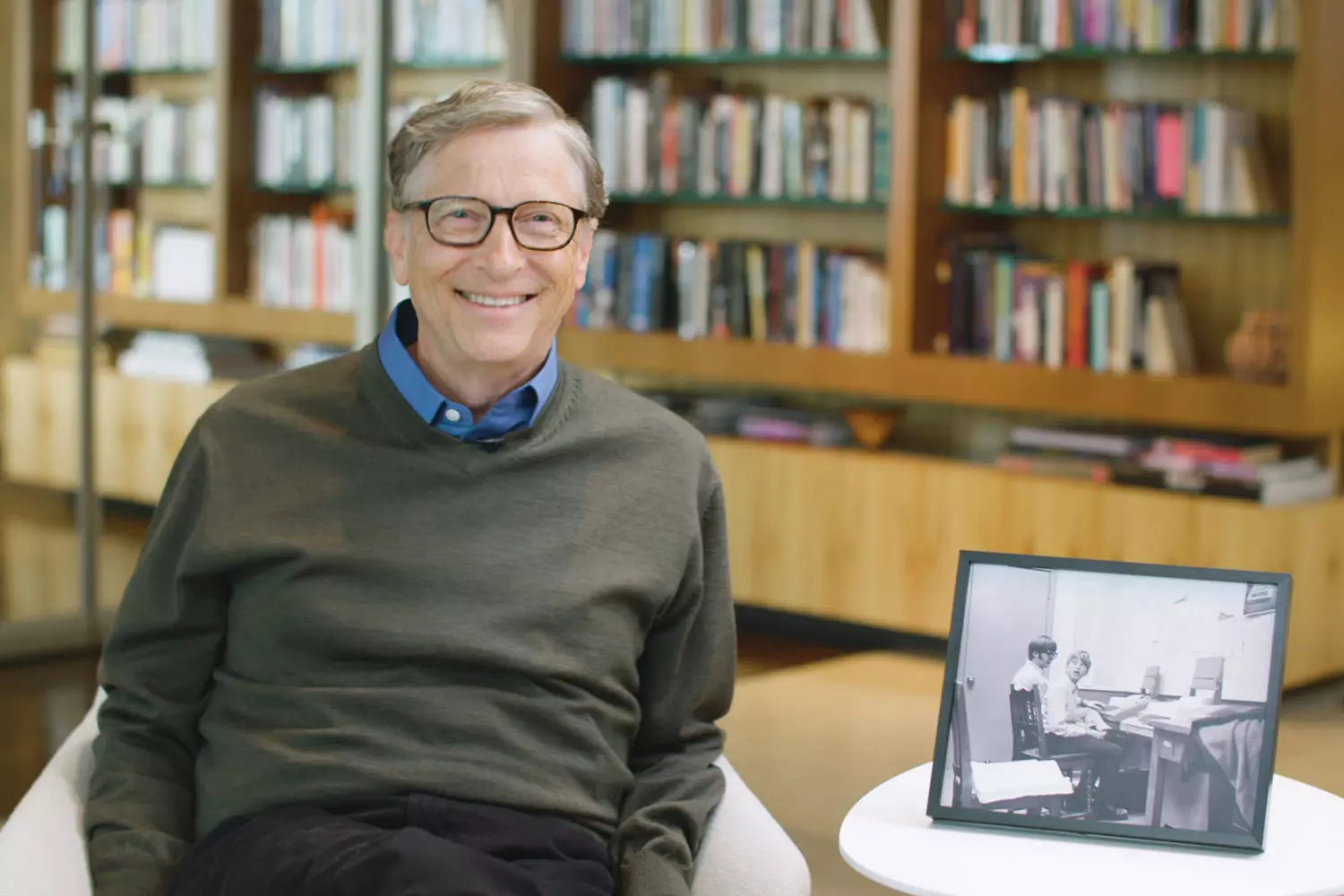
Harvard: a springboard, not a finish line
In the fall of 1973, Bill Gates did what thousands of talented students around the world dream of — he enrolled at Harvard University. For his parents, this was a sign: their son was following in the footsteps of the brightest minds on the planet. At the time, Harvard was not just a university but a symbol of intellectual elite, a place where leaders and future scientific geniuses were forged.
But for Bill, Harvard was not a pinnacle; it was another starting point. Even then, his thinking set him apart from most of his peers. He was not interested in diplomas or academic honors — he was fascinated by the future, a future that no one had yet tried to build.
- 01. Harvard Days: Books, Coffee, and Code
Bill lived in Currier House. His roommates recalled that he rarely slept and constantly programmed. Sometimes he would code for two days straight, fueled by coffee and pizza, then sleep for three hours and return to the screen.
Gates was not a typical student. He might skip a philosophy lecture to debug a number sorting algorithm. He was interested in possibilities, not theories. He sensed he was on the brink of something big — and Harvard became the place where his thoughts gained structure. One course that particularly inspired him was Computational Mathematics. It was there that he first grasped the scale of the upcoming technological revolution. Computers were beginning to move from science into business but were still bulky and expensive. “I realized computers would become personal. The question was not ‘if,’ but ‘when,’” Gates later recalled. - 02. The Meeting That Changed His Fate: Magazine and Revelation
In 1974, Bill reconnected with Paul Allen, his longtime friend from Lakeside School. Allen was already working as a programmer and, like Gates, dreamed of starting a tech business.
One day, Paul brought a copy of Popular Electronics magazine, whose cover featured a new personal computer — the Altair 8800. This was the moment that changed everything. The Altair was simple and primitive by today’s standards, but for Gates and Allen, it was a revelation: personal computers were real. If a device could be purchased and programmed, it could be improved and made mass-market. Paul, waving the magazine, literally ran into Gates’ dorm room and exclaimed: “Bill, this is what we’ve been waiting for! A computer that fits in a home!”
Gates immediately grasped the magnitude of the idea. They decided to create software for the Altair — a BASIC programming language that would allow ordinary users to write simple commands and programs. - 03. The First Steps Toward Microsoft
Bill and Paul contacted MITS, the manufacturer of the Altair, offering their development. The challenge was that they had no code yet — only an idea and confidence in their abilities.
They promised to produce a working version of BASIC for the Altair within weeks. Gates locked himself in Harvard’s computer center and practically lived there. In just a few weeks, he wrote and debugged thousands of lines of code using the PDP-10 mainframe. When they finally demonstrated the program at MITS headquarters, it worked on the first try — a rare occurrence. It was a triumph. MITS signed a contract with them, and Altair BASIC became the first commercial product of the future Microsoft corporation. - 04. The Decision That Changed His Life
After this success, Gates realized it was time to act. In 1975, he officially left Harvard before graduating. To most people, it sounded insane: leave Harvard for an uncertain startup? But for Gates, it was not a risk — it was a deliberate step toward the future. “If I hadn’t tried then, I would have regretted it for the rest of my life,” he later said.
Harvard gave him knowledge, contacts, and confidence, but most importantly, it gave him time to understand that his place was not in classrooms but in the real world of technology.
Fun fact: After leaving Harvard, the university administration struggled to know how to react. On one hand, he was a “dropout.” On the other hand, he later became one of Harvard’s most successful alumni, even without a diploma. In 2007, more than 30 years later, Harvard awarded Gates an honorary doctorate, and in his speech he joked: “It took me only thirty years to finally finish Harvard.”
Harvard was not the end of Gates’ story — it was the beginning. It was not a place he left, but a platform from which he launched. Here, the idea that would forever change the digital world was born. Here, the young student realized that to create a new future, sometimes you must have the courage to step outside the system.
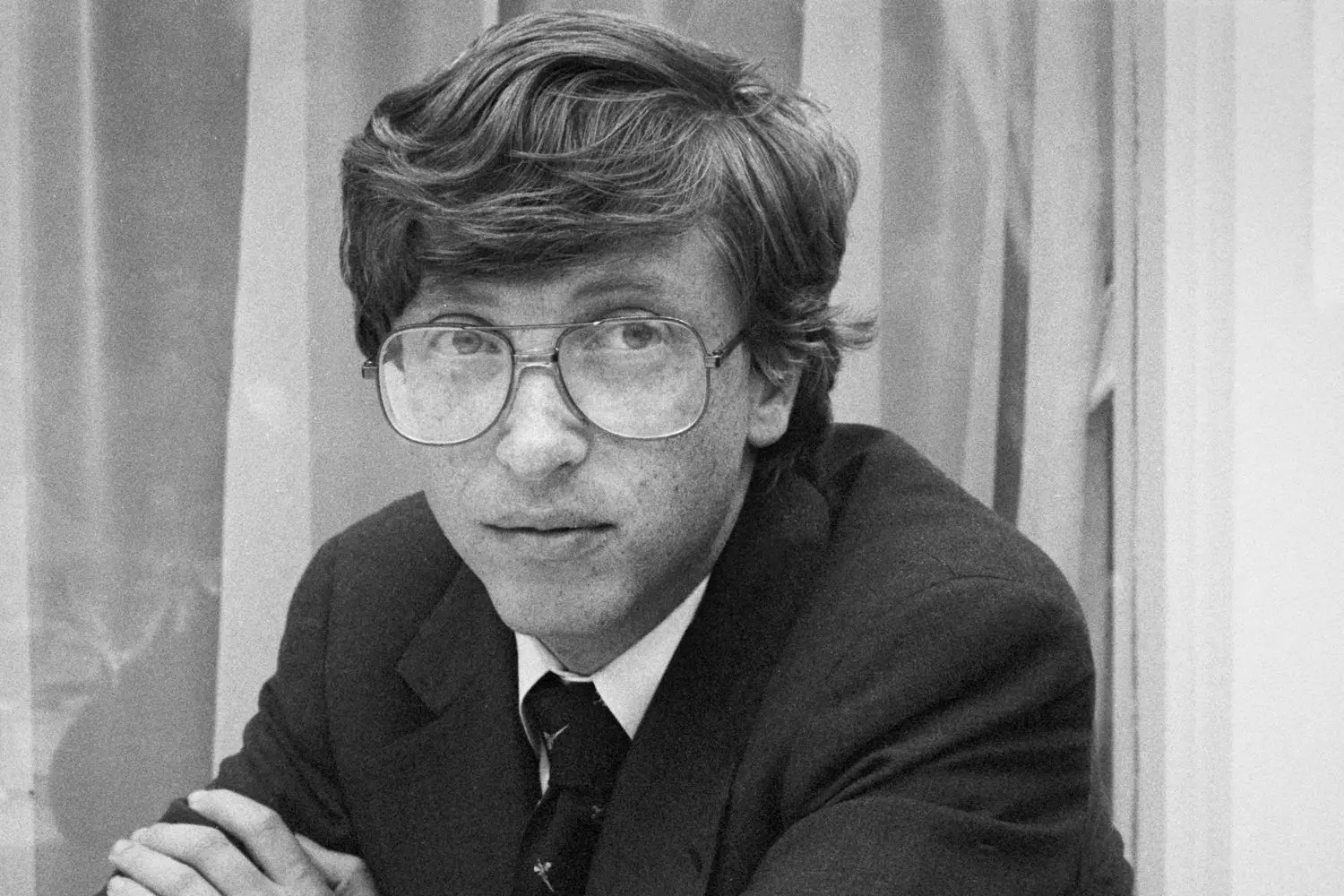
The Birth of Microsoft: A Story That Started with Code and No Office
It all began not with flashy investments or presentations in front of cameras. Microsoft was born from an idea, from a piece of code written by two friends in a small room where instead of an office there was one computer, a few empty pizza boxes, and an ocean of enthusiasm.
In 1975, after the success with Altair BASIC, Bill Gates and Paul Allen decided to do what very few dared at the time — to start their own software company. They chose the name Micro-Soft, combining two words: microcomputer and software. This name would later become a symbol of an entire era.
- 01. First Office — In Albuquerque
The MITS company, manufacturer of the Altair, was based in Albuquerque, New Mexico. Bill and Paul moved there to be close to their first client. The Microsoft office was a small space of just a few dozen square meters. Gates’ workspace was modest: an old desk, a telephone, stacks of punch cards, and a constant mug of coffee. Yet there was an atmosphere of freedom and true engineering enthusiasm. People came not “to work” but to create the future.
Gates was not only a programmer but also accountant, manager, and tester all in one. He slept four hours a night, coded at night, and negotiated partnerships during the day. Paul Allen joked that Bill “could work 36 hours straight if there was coffee and a computer nearby.” - 02. First Clients and Initial Challenges
Initially, Microsoft survived on enthusiasm. Money was scarce, and the personal computer market was just emerging. There were dozens of small firms, each producing its own hardware and needing its own software.
The main problem was piracy — users copied BASIC and distributed it for free. For the young company, this was a disaster. In response, Gates wrote the famous “Open Letter to Hobbyists”, urging respect for programmers’ work and the need to pay for it. “If software has value, it’s because someone’s work is behind it. Without this, there will be no progress,” Gates wrote. This letter became one of the first manifestos in digital ethics and shaped a new attitude toward intellectual property in the IT industry. - 03. Looking Beyond the Horizon
Even while working with MITS, Gates understood that personal computers were only the beginning. He saw that eventually millions would want their own devices, all of which would require software.
Gates wasn’t just writing code — he was building a vision of the future. He imagined operating systems, office programs, games, and communication networks. In one of his letters to Paul Allen, he wrote: “Our programs must be in every home. One day this will be normal.” - 04. Moving to Seattle and the Start of a Big Journey
In 1979, Microsoft moved from Albuquerque to Seattle — the city where it all began. The company grew, employees and partners joined, and real contracts were signed. It was in Seattle that Microsoft closed the deal that would define the fate of the entire industry. - 05. Deal with IBM: Instant Breakthrough
In 1980, the legendary corporation IBM was seeking an operating system for its new personal computer. Gates immediately saw this as an opportunity not to be missed. The problem was that Microsoft did not yet have a ready system.
But Gates acted decisively. He found a small company, Seattle Computer Products, which had a similar system called QDOS (Quick and Dirty Operating System). Microsoft bought the rights for $50,000, refined the code, and presented IBM with their version under a new name — MS-DOS. Gates’ brilliant move was to retain the distribution rights for Microsoft instead of selling them to IBM. This decision brought the company billions and turned it into a tech giant. “IBM owned the hardware. We owned the mind,” a Microsoft employee later joked. - 06. Birth of a Legend: Microsoft Becomes an Era Symbol
After MS-DOS’s success, Microsoft began to grow rapidly. Employees joked that working at the company was like running a marathon without a finish line: no one knew when they could stop. Gates was demanding and sometimes even strict, but his perfectionism and persistence made Microsoft the best.
In 1985, Windows 1.0 was released, and ten years later, Windows 95 became a true revolution. Millions of people saw familiar windows, icons, and a mouse cursor for the first time. The world was changed forever — and it all started with two students who once decided to write a simple BASIC language for a computer no one had heard of.
The name Microsoft first appeared in a letter from Gates to Allen in 1975. He wrote it with a hyphen — Micro-Soft. Later, as the company grew, the hyphen was removed to make the name more concise. Since then, it has become one of the most recognizable brands in history.
Microsoft became more than just a business. It was an ideology where technology serves humanity. Gates believed that a computer was not a luxury but a tool that makes people smarter, faster, and freer. “Our mission is a computer on every desk and in every home,” was the company’s motto.
And Gates kept his word.
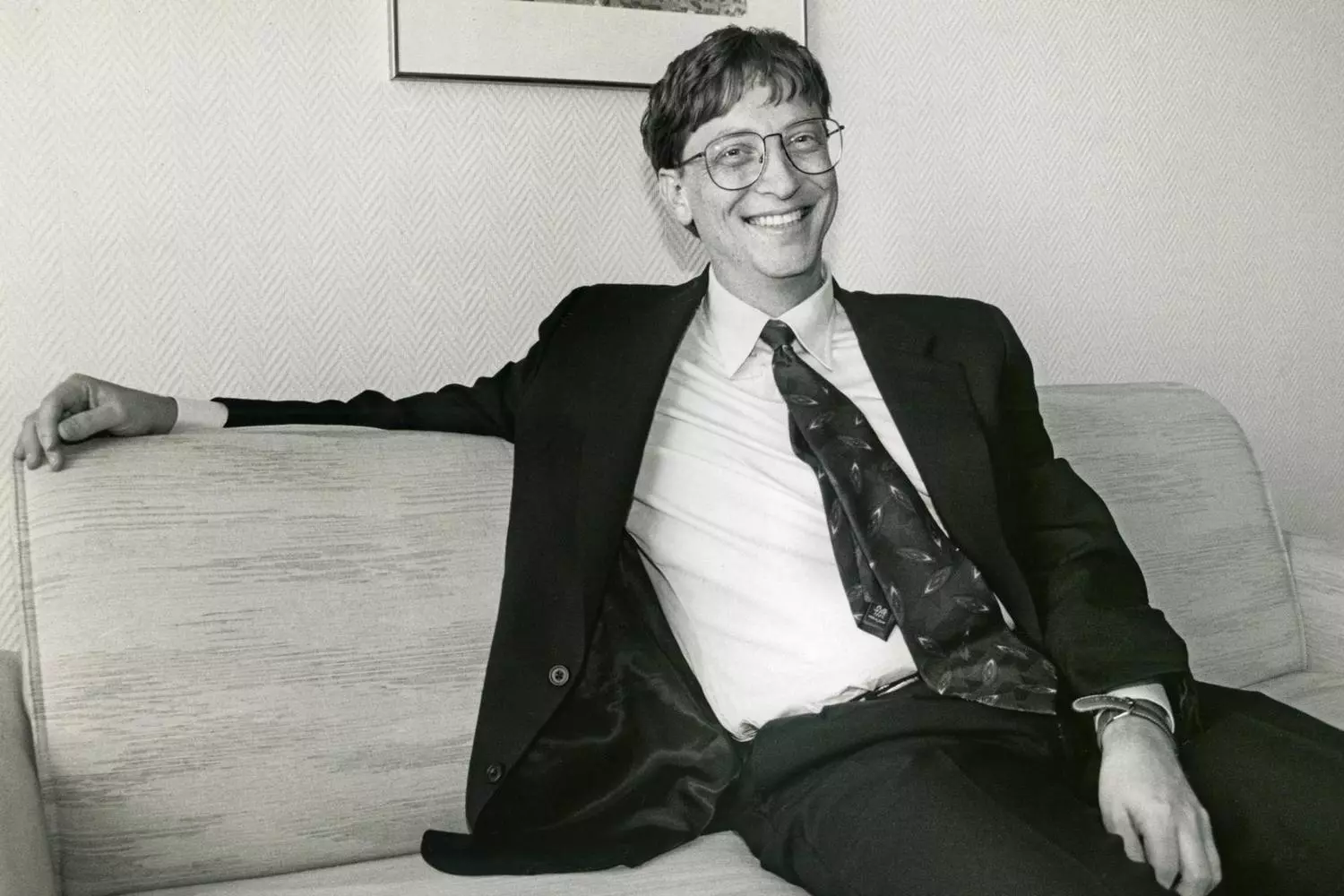
The Windows Era and Global Recognition: When the World Went Digital
By the mid-1980s, Microsoft was no longer a small startup. The company had become a powerful force, setting the direction for the entire industry. But Gates had no intention of stopping. His goal was much greater — to make working with a computer intuitive, simple, and accessible to everyone.
MS-DOS worked brilliantly, but it remained a “language for engineers” — a set of commands that had to be typed manually. Gates dreamed of a world where users could control a computer with their eyes and a mouse, not a command line. That’s how the idea of Windows was born.
- 01. The First Window to the Future
In 1985, Windows 1.0 was released — the first graphical interface for MS-DOS. At that time, it looked quite primitive: windows couldn’t overlap, the cursor moved in jerks, and icons looked like pixel sketches. But it was the beginning of an entirely new era — a visual connection between humans and machines. Windows allowed people to feel that computers could be friendly. No longer frightening and complex, but clear and even cozy. “We wanted the computer to stop being a monster with blinking lights and become a helper,” Gates said. - 02. Windows 3.0 — The First Wave of Success
The real breakthrough came in 1990 with the release of Windows 3.0. It became the first version that truly captured users’ hearts. A colorful interface, desktop, “File” button, and the ability to run multiple programs at once — it all felt like magic. Sales skyrocketed. By the end of the year, Microsoft had sold more than 4 million copies — and it was only the beginning. The first Office packages appeared, along with games like Minesweeper and Solitaire, which became part of the 1990s cultural code. - 03. Windows 95: The Day Computers Fell in Love with People
On August 24, 1995, the world experienced one of the most iconic tech moments in history. Windows 95 went on sale, and the launch felt more like a Hollywood premiere than a software release. Long lines outside stores, TV commercials with The Rolling Stones’ Start Me Up, glowing media reviews — Microsoft had turned technology into pop culture. Windows 95 brought the world the features we can’t imagine computers without today:
- The Start button;
- The Taskbar;
- Simple Internet connectivity;
- And most importantly — an intuitive design that anyone could understand.
- 04. Microsoft as the Symbol of the ’90s
By the late 1990s, Microsoft had become more than a company — it was the symbol of the digital age. Every school kid knew the word Windows, and the name “Bill Gates” became synonymous with wealth, intelligence, and success. At the company’s Redmond campus, life was buzzing. Hundreds of young programmers worked on products shaping the future:
- Internet Explorer;
- Office 97;
- Windows NT for corporate clients;
- Early experiments with multimedia and 3D graphics.
Gates personally reviewed even the smallest interface details, down to pixel placement and panel color. His perfectionism sometimes drove employees crazy, but it was what kept Microsoft at the top.
- 05. Competition and Criticism
However, with power came scrutiny. Microsoft became the dominant force in the operating system market, which sparked a wave of criticism. In 1998, the U.S. government filed an antitrust lawsuit against the company. Gates endured hearings and interrogations but remained composed. He knew that leadership comes at a cost. “If people are criticizing you, it means you’re doing something right,” he said with his trademark irony. This period tested both Gates and Microsoft, but they endured it with dignity. The company stayed on top, proving its success was no accident.
At the Windows 95 launch, an entire army of marketers and journalists was mobilized. It’s estimated that Microsoft spent over $300 million on the advertising campaign — a record at the time. But it paid off: within four days of release, over 1 million copies were sold.
By the end of the 1990s, Bill Gates had become not just the richest person in the world but also the face of technological progress. People knew him, quoted him, sometimes criticized him — but always listened.
He didn’t just create products — he shaped a new way of thinking. The world was moving toward digitalization, and Gates was at the helm of that movement.
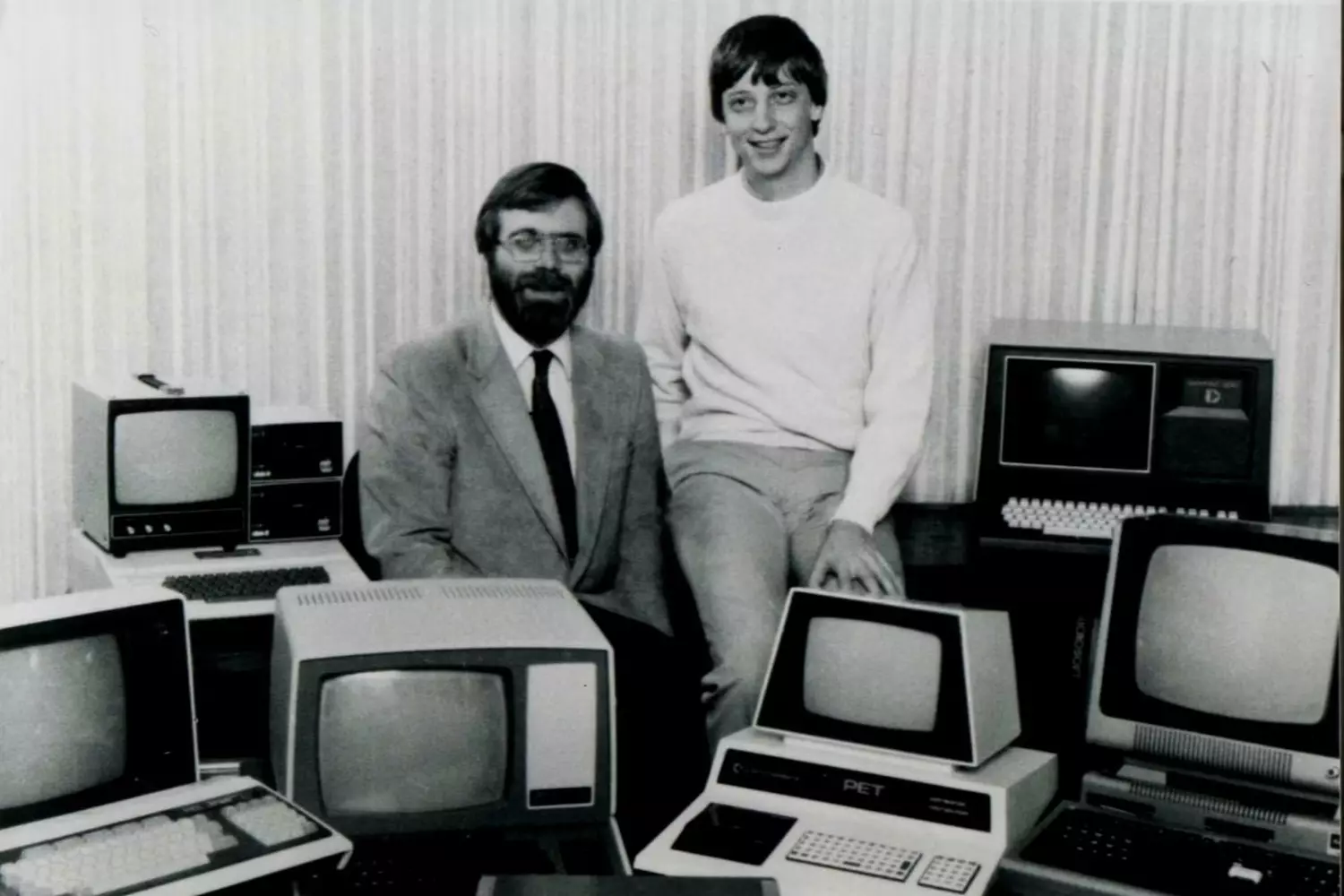
Bill Gates’ New Mission: When Technology Took a Backseat to Humanity
By the early 2000s, Bill Gates had already achieved what millions dream of. He was the richest person on the planet, the head of a company shaping the future of technology, and a symbol of an era when computers were no longer a luxury.
But the more he looked beyond Silicon Valley, the more his thoughts turned not to profit, but to people — to the billions living without access to clean water, healthcare, or education.
“If you have the power to change something, you also have the responsibility to do so,” he once said.
Thus began the second life of Bill Gates — as a philanthropist, reformer, and someone who decided to direct his resources where they were needed most.
- 01. Foundation Born: Love and Responsibility
In 2000, Bill and his wife Melinda founded the Bill & Melinda Gates Foundation — one of the largest charitable foundations in the world today. Its mission is simple yet grand: to improve the quality of life for people globally. The foundation operates in dozens of countries and covers a wide range of initiatives:
- Fighting infectious diseases, including polio and malaria;
- Developing education systems;
- Supporting vaccination programs and medical research;
- Helping women and children in the world’s poorest regions.
It all began with a few dozen employees and a couple of projects in Africa. Today, it’s a global organization with a multi-billion-dollar budget, collaborating with governments, universities, and the UN.
- 02. A Turning Point: Confronting Reality
In one interview, Gates said that a pivotal moment was his trip to Africa in the late 1990s. He witnessed children dying from diseases long eradicated in developed countries. “I realized I was living in a bubble. We spend billions on new technology, yet millions of people cannot even afford clean water,” he recalled. This trip reshaped his worldview. From the creator of the digital world, he became someone striving to fix the real-world inequalities. - 03. Investing in the Planet’s Health
The Gates Foundation became a major donor in the fight against malaria, tuberculosis, and HIV. Bill invested billions in vaccine development, supporting research labs, and bringing medical technologies to the poorest nations.
Special attention is given to children — as child mortality remains one of the most urgent issues in the Global South. Thanks to foundation programs, vaccination rates in some regions have multiplied, giving millions of children a chance at life. “No life should depend on where you are born,” Gates says. - 04. A New Role: Not a Businessman, but a Teacher
After stepping down as Microsoft CEO in 2008, Gates focused almost entirely on the foundation’s work. He stopped being “the world’s chief programmer” and became the main advocate for global equality.
He didn’t just donate money — he built a system: efficient, transparent, and data-driven. The same logic that led him to success in business was applied to philanthropy. Every foundation project is treated like a startup: goals are set, results measured, data analyzed. Humanity meets analytics. - 05. Partnership with Warren Buffett: The Giving Pledge
In 2010, Gates and his friend, legendary investor Warren Buffett, launched The Giving Pledge. The initiative’s premise is simple: billionaires worldwide pledge to give at least half of their wealth to charity. Participants include Mark Zuckerberg, Elon Musk, Richard Branson, and dozens more. Gates showed that generosity can be the norm, not the exception, for the wealthy. - 06. Technology for Good
Even in philanthropy, Gates stays true to his engineer’s mindset. He continues to seek technological solutions to social problems: supporting startups that create affordable energy, sustainable agriculture systems, innovative sanitation for poor countries, and digital education programs. Gates often says, “Innovation is not a luxury. It’s a chance for the world to survive.”
Fun fact: Even though Gates has donated tens of billions to charity, his personal wealth continues to grow. How? He invests smartly: some foundation assets operate through profitable investment vehicles. Gates has turned philanthropy into not just giving, but a sustainable economic model for doing good.
Today, Gates resembles a philosopher more than a businessman. He lectures at universities, writes books on the future of technology and climate, and speaks at TED conferences. He talks about the importance of data, science, education — and that “human capital” is more valuable than any financial capital.
“We can measure everything — except compassion. But it is compassion that moves the world,” he said in one interview.
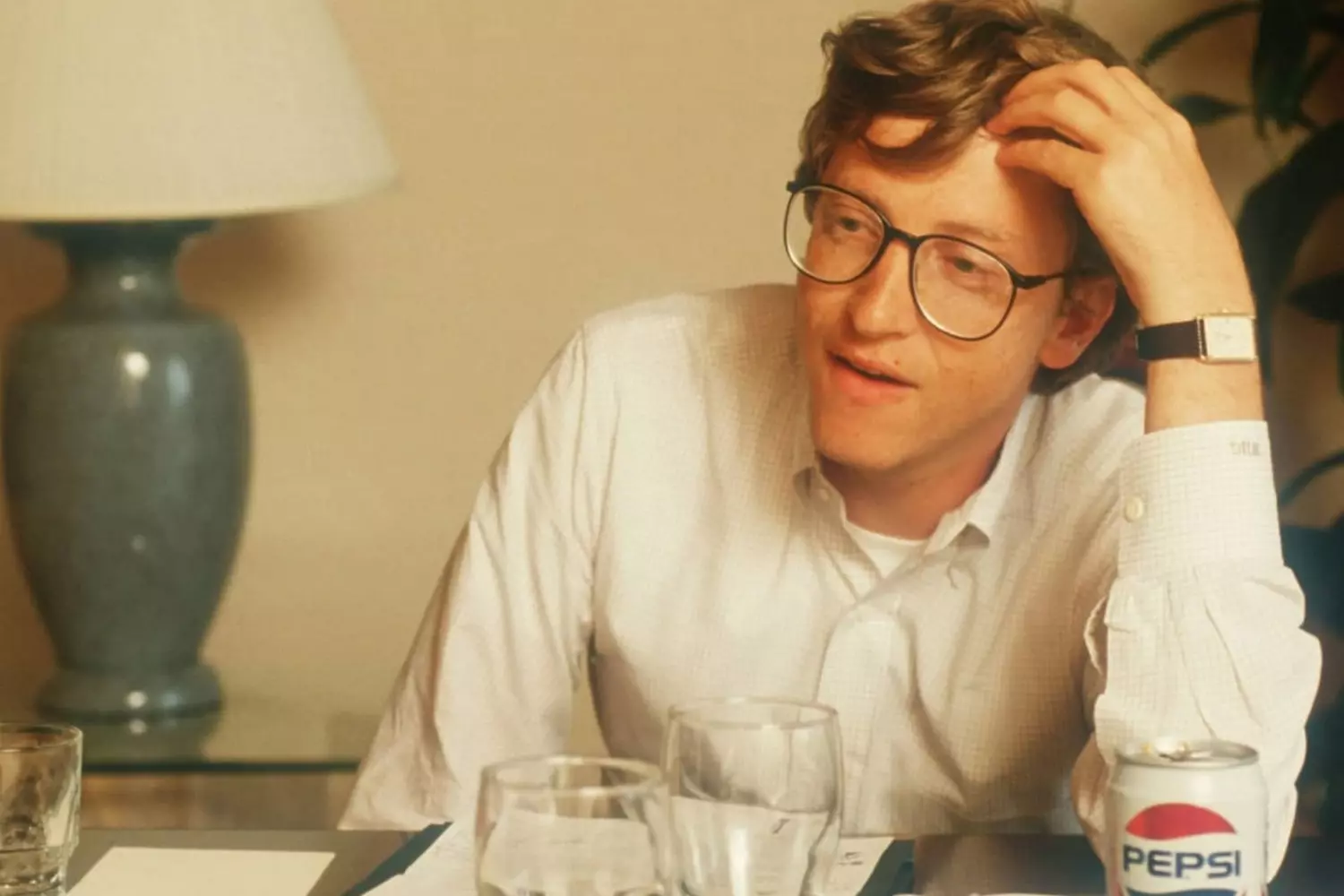
Bill Gates and Artificial Intelligence: A Glimpse into the Future of Technology
Bill Gates has never been afraid to look ahead. Even as a child, he understood that technology could change not only the life of an individual but the entire world. Today, decades after Microsoft’s emergence, his focus is on artificial intelligence — one of the most discussed and promising fields of modern science.
For Gates, artificial intelligence is more than just a buzzword. He sees it as a second birth of the personal computer, a moment capable of radically transforming the economy, medicine, education, and even social structures. In his view, the impact of AI is comparable to the arrival of the internet in the 1990s: the same scale, the same transformative power, but with far broader consequences.
- 01. Gates’ Perspective: AI as a Tool, Not an End
Gates emphasizes a crucial distinction: AI is a tool, not a universal solution to all problems. “AI is a powerful tool. But its benefit depends on who uses it and how,” he warns.
For him, the key issues are ethics and control. Artificial intelligence can make life easier, predict epidemics, optimize production, and improve agriculture and education. But in the hands of irresponsible actors, AI can exacerbate inequality and create new risks. Gates believes AI development must combine technological innovation with human-centered values. Machines should assist humans, not replace them entirely. - 02. Investing in the Future through Startups
Gates’ philanthropic and entrepreneurial approaches converge in investing in startups that use AI to tackle global challenges. Areas he supports include:
- Healthcare
AI helps analyze massive medical datasets, accelerates disease diagnosis, and aids in developing new treatments. - Climate and Environment
Technologies forecast climate changes, model sustainable agricultural systems, and develop “green” solutions. - Education
AI-driven adaptive learning platforms adjust to students’ levels, making education accessible even in remote areas. - Social Initiatives
AI evaluates the effectiveness of charitable programs, helps allocate resources, and addresses humanitarian challenges.
Gates views AI as a way to scale goodness. For him, it’s not just business or a hobby — it’s an opportunity to use technology to deliver tangible benefits to millions of people.
- 03. AI and Gates’ Philosophy
In his talks, he often stresses that artificial intelligence is a mirror of humanity. “AI reflects what we teach it. If we invest knowledge, wisdom, and care for people, it becomes an incredible tool. If not — it will reveal our weaknesses,” he explains. This idea aligns with his lifelong philosophy: technology alone does not change the world — the people who create and use it do.
In 2019, Gates participated in a research project where AI analyzed data on global disease outbreaks. The system predicted high-risk areas well before official UN notifications, allowing medical aid to be dispatched in advance and preventing thousands of cases.
For Gates, this was not just an experiment — it was proof that AI can save lives if applied wisely and responsibly.
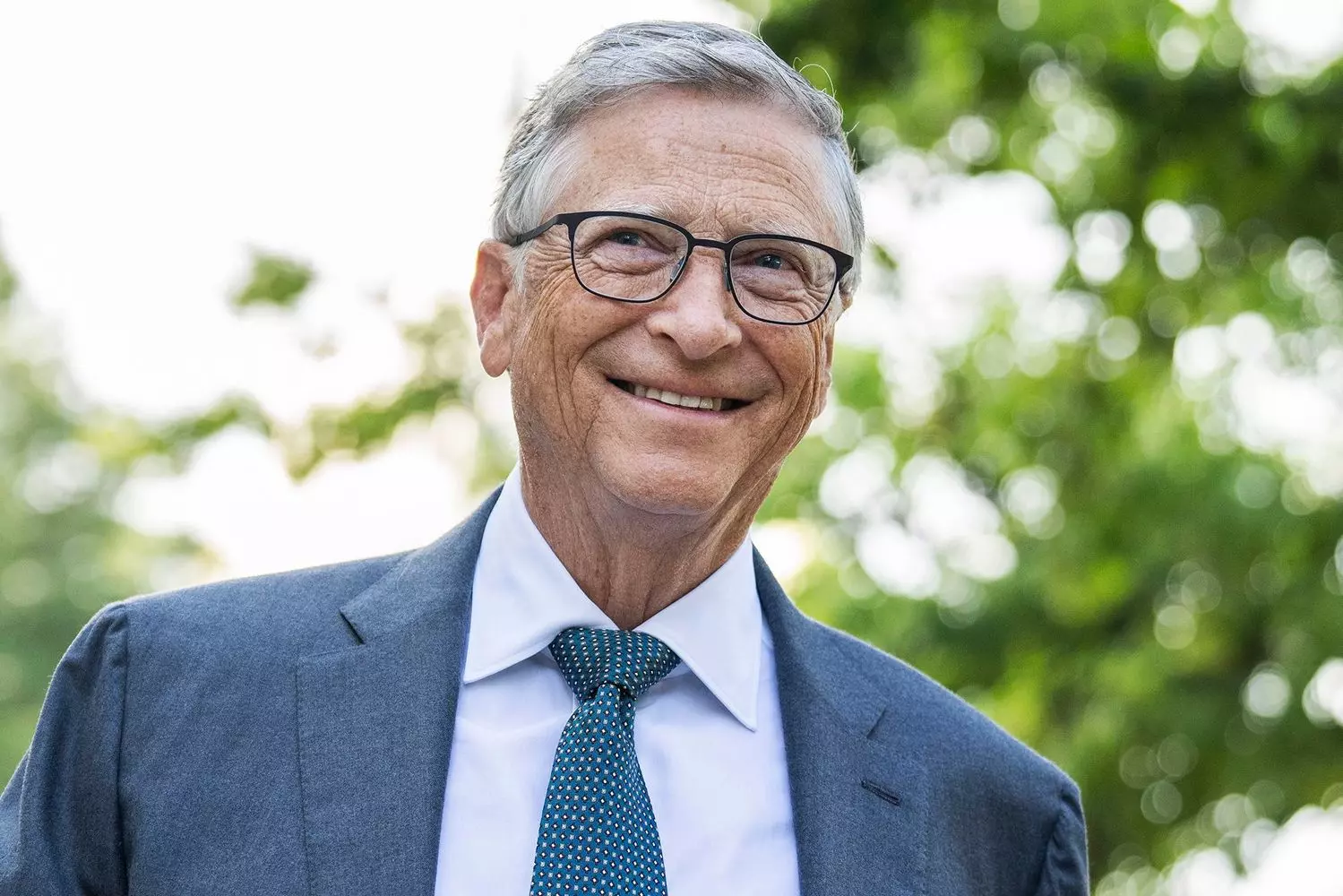
The Man Behind the Billions: Bill Gates’ Personal Life and Human Side
When you talk about Bill Gates, most often you think of him as a billionaire, a tech genius, and a philanthropist. But behind all that is a human being, with habits, passions, and values that make him surprisingly relatable and understandable.
Gates has always remained approachable. Despite being the world’s richest person in the late 1990s, he did not pursue luxury for luxury’s sake. Colleagues recall that Bill might fly to an important conference in economy class, preferred a regular cup of coffee over corporate tastings, and never lost his love for learning and books.
- 01. Family and Values
Bill was born into a family that valued education, hard work, and honesty. He carried these principles throughout his life. His wife, Melinda Gates, with whom he was married for more than two decades, played a huge role in shaping his views on philanthropy and social responsibility.
Together they created the Bill & Melinda Gates Foundation, where every project was carefully planned and measured by results. Their partnership was not only personal but intellectual, with each inspiring the other toward ambitious ideas. Even after their divorce in 2021, they maintained a working partnership and continued co-managing the foundation. This is a rare example of how maturity and shared goals can prevail over personal disagreements. - 02. Hobbies and Habits
Bill is known for his love of reading — he goes through about 50 books a year, including biographies, popular science, and fiction. He publicly shares his reading lists, inspiring millions to expand their knowledge and imagination.
Additionally, Gates enjoys logical games and puzzles. Since childhood, chess, Sudoku, and crosswords have been his way to “reset his brain.” Today, he also enjoys strategic games that help him think systemically and foresee the consequences of decisions several steps ahead. - 03. Humanity and Simplicity
Despite billions in his accounts, Gates maintains remarkable simplicity. He enjoys humor, comments ironically on his mistakes, is not afraid to show doubts, and learns from them. With colleagues, he communicates directly, sometimes even checking the details of minor projects. His personal philosophy is reflected in his habits:
- He avoids ostentatious luxury, preferring functionality;
- He exercises regularly — running, tennis, swimming;
- He travels not for status but to explore the world and exchange experiences.
Bill Gates still keeps his Altair 8800, the first computer he worked with at Lakeside School. For him, it’s not a museum piece but a symbol of the beginning of his journey — a reminder that every great achievement starts with a small step. His desk in Redmond is still covered with books and notes — his personal “library of ideas,” where every line can inspire a new project, whether in technology or philanthropy.
- 04. Humanism Through Technology
Gates believes technology should serve people, not the other way around. This is reflected not only in his projects but in his daily actions. He personally participates in foundation decision-making, studies vaccination reports, and analyzes the effectiveness of education programs.
For him, the most important thing is the impact on people. Billions of dollars and global status are tools, not the goal. The main goal is to improve lives and set an example of responsibility and integrity.
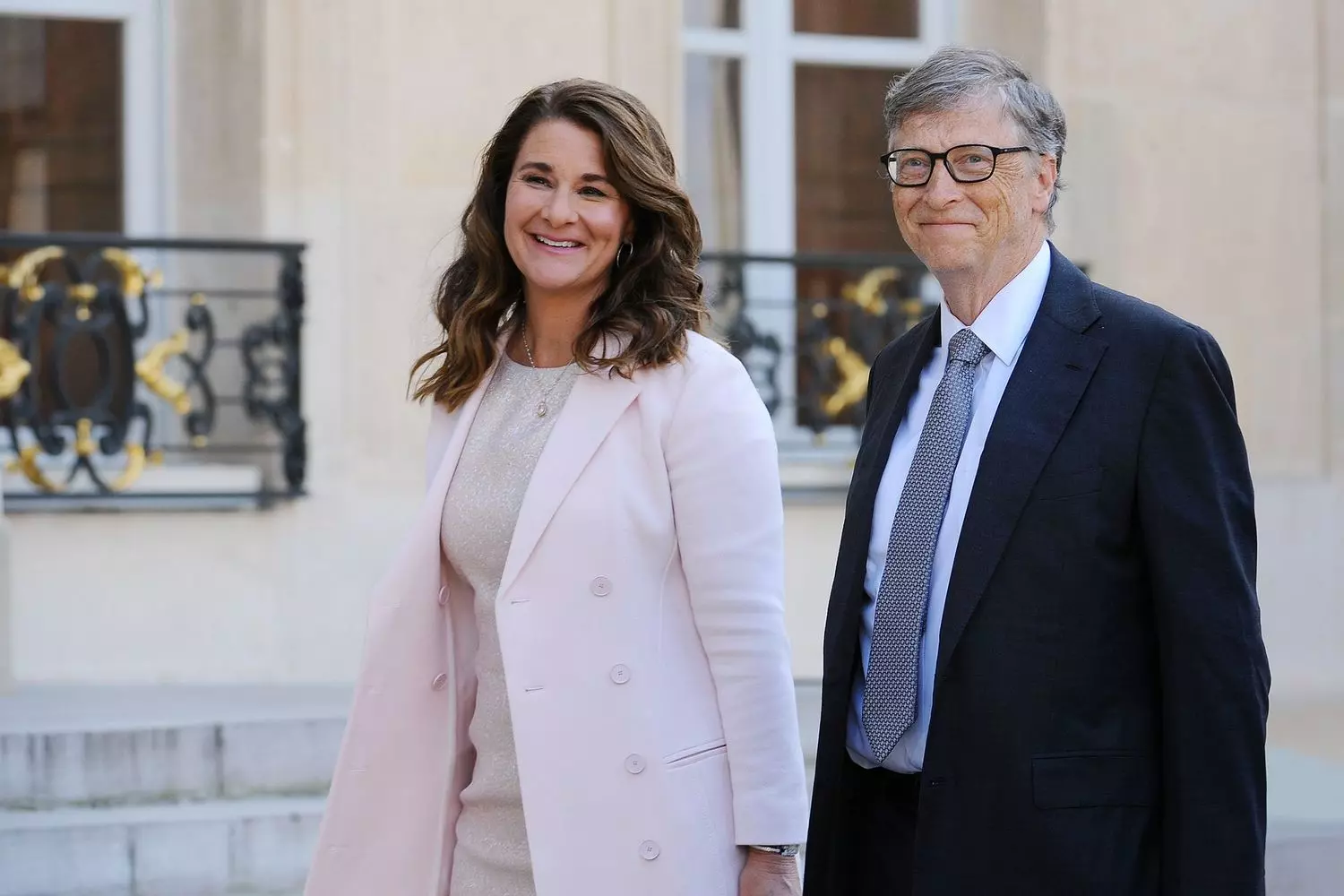
Mistakes and Self-Reflection: How Gates Learns from Setbacks
Bill Gates is a man whose name is synonymous with success, innovation, and billions of dollars. Yet behind this image lies an extraordinary ability to acknowledge mistakes, analyze them, and use them as fuel for further growth. For a business leader of his scale, this is a rare quality.
Gates consistently emphasizes that failures are part of the journey, and only an honest assessment of missteps helps one develop. He openly discusses his strategic oversights, never hiding them behind his notable achievements.
- 01. Misstep with Mobile Technology
One of Gates’ most famous mistakes was underestimating the mobile market. In the early 2000s, Microsoft actively developed Windows Mobile, but Gates and his team underestimated the pace of market change and Apple’s potential with the iPhone. “If I hadn’t underestimated smartphones back then, you might be holding a Windows Phone now instead of an iPhone,” he admits with a smile. This misstep cost Microsoft leadership in the smartphone market, but Gates views it philosophically: sometimes big failures open the door to new opportunities. - 02. Self-Criticism as a Growth Tool
For Gates, self-criticism is not just words. He regularly reviews strategic decisions, foundation projects, and business initiatives. He is willing to acknowledge when something goes wrong, whether it’s a technological forecast, a partnership, or an investment.
For instance, he admitted that Microsoft entered the social network and cloud computing markets too late, allowing competitors like Google and Facebook to consolidate their positions. “Mistakes are data. You need to collect, analyze, and learn from them. Without this, progress is impossible,” Gates explains. - 03. Lessons for Business and Life
Gates’ ability to acknowledge mistakes makes him a role model for leaders and entrepreneurs. It shows that it doesn’t matter how many successes a person has behind them — what matters is how honestly they evaluate themselves and their decisions.
This philosophy permeates all his projects — from Microsoft to the Bill & Melinda Gates Foundation. In philanthropy, he is also unafraid to recognize when a program does not achieve the expected results and to adjust the strategy accordingly.
Gates once said that one of his favorite lessons at Harvard was not about programming, but about analyzing mistakes in class projects. He realized that understanding missteps provides deep insight into a system and allows for building more reliable solutions.
Today, this habit helps him be not only a successful entrepreneur but also a wise mentor whose advice is valued by millions around the world.
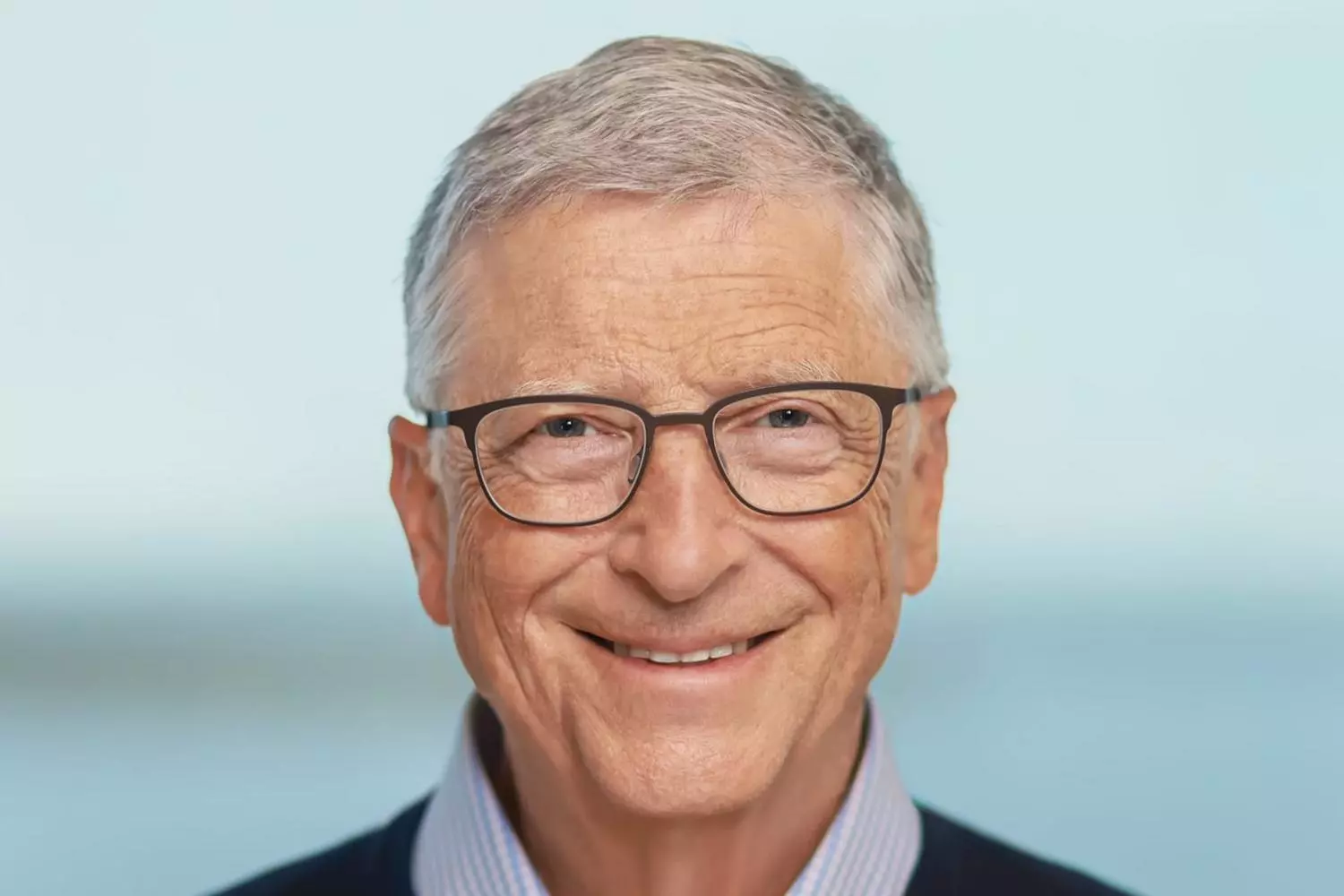
What Bill Gates Teaches: Life Lessons and Keys to Success
Bill Gates is not just a name associated with the technological revolution. He has become a symbol of thinking rooted in curiosity, courage, and responsibility. His journey demonstrates that success is not only about talent, but also about habits, worldview, and the willingness to learn from mistakes.
From his biography, several key lessons can be drawn, useful for everyone — from students to executives of major companies.
- 01. Don’t Be Afraid to Take Risks
Gates often emphasizes that fear of failure is the main enemy of progress. Even paths that seem crazy or impossible are worth trying.
As a teenager, he and Paul Allen took the bold step of creating programs for computers that almost no one used. Later, he left Harvard when most people considered it madness. “The best ideas come when you step out of your comfort zone. If you fear taking risks, you may never know what you are capable of,” Gates says. This lesson is relevant at any stage of life: risks don’t guarantee success, but their absence almost always guarantees stagnation. - 02. Commit to Lifelong Learning
Bill Gates is an example of someone who never stops learning. He reads around 50 books a year, combining popular science, biographies, business, and philosophy.
For Gates, learning is not a formality, but a tool to understand the world and find solutions to global problems. He applies knowledge to business, investments, and philanthropic projects. “Reading is a way to travel without luggage and a pastime that pays dividends,” he often says. His daily habit of learning demonstrates that intellectual energy is more important than any starting platform. - 03. Think Beyond Technology
Gates teaches that true innovation changes people’s lives, not just gadgets. Microsoft and Windows are not just programs — they are tools that have allowed millions to work, learn, and create.
In philanthropy, he applies the same principle: technology should serve humanity, not be an end in itself. By investing in healthcare, education, and climate solutions, he shows that innovation carries responsibility for people. “Technology is a tool, but the meaning lies in how it helps people,” he explains. - 04. Share Your Success
Philanthropy is a key element of Gates’ philosophy. He believes that wealth is a resource, not a final goal, and sharing it is not a loss but an investment in the future. The Bill & Melinda Gates Foundation helps millions while fostering a culture of responsibility and mutual aid. For Gates, this is a natural extension of business logic: success is not only a personal victory, but also a chance to improve the world. “Sharing success means creating more opportunities for future generations,” he says.
Fun fact: Bill Gates is known for sharing a yearly list of books that inspired him with millions of people worldwide. He believes that a book recommendation can be more valuable than a million dollars if it changes a person’s thinking.
These four lessons embody Gates’ philosophy: courage, curiosity, responsibility, and generosity. They show that success is measured not just in money, but in the depth of one’s impact on people’s lives.
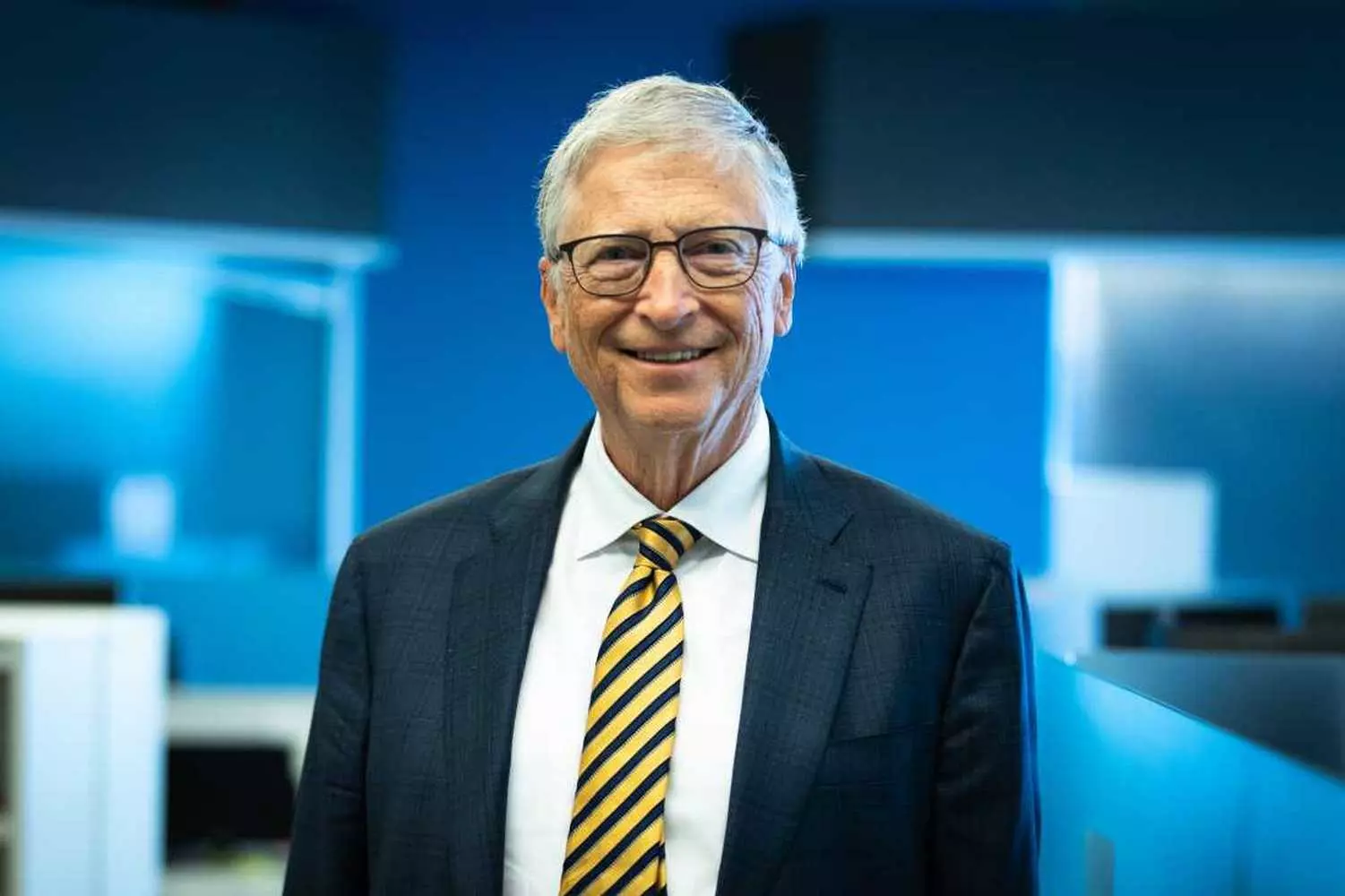
Bill Gates and the Future of Humanity: Technology in the Service of Life
Bill Gates is not only a technology visionary and philanthropist. Today, his focus is on global challenges that affect all of humanity. He often speaks about future risks and solutions, firmly believing that technology alone cannot solve problems without a person behind it with clear goals and responsibility.
- 01. Key global threats Gates identifies include:
- Pandemics and health risks
Through his experience with the Gates Foundation and vaccination projects, he understands that the world is unprepared for new viruses unless early warning systems, drug production, and resource distribution are in place. - Climate change
Gates emphasizes that global warming is not an abstract problem, but a matter of survival for millions, especially in developing countries. He invests in green technologies, energy-efficient solutions, and sustainable agriculture. - Educational inequality
For Gates, digital literacy and access to knowledge are crucial for societal development. He envisions a world where talented children anywhere can learn through technology, not just those born in wealthy countries.
- 02. Technology as a tool, not an end
Gates repeatedly stresses that creating technology for the sake of technology is meaningless. Its value is measured by how it benefits people and society. “The main thing is not to create technology for technology’s sake. It should serve people,” he said in an interview.
He sees a future where artificial intelligence, medical innovations, and new energy sources don’t just make life easier, but solve real-world problems: saving lives, protecting the planet, and creating equal opportunities for all. - 03. Investing in a global future
The Gates Foundation and his personal initiatives focus on technologies that can improve human life. This includes:
- Developing vaccines and disease monitoring systems.
- Innovative clean energy sources and reducing carbon emissions.
- Digital education programs for children and adults in resource-limited countries.
- Using artificial intelligence to analyze global problems and speed up decision-making.
For Gates, these are not just projects — they are ways to show how human intelligence and technology can work together for the planet’s benefit.
- 04. Gates’ philosophy on the future
Bill believes humanity is on the verge of an era where technological advances can save millions of lives and reduce inequality if approached consciously. “We must be wise and careful. Technology offers enormous opportunities, but the main thing is to direct it toward solving problems, not creating new ones,” he says.
His vision of the future is a world where innovation and compassion go hand in hand, and technology becomes a tool, not an end in itself.
Gates regularly participates in symposiums on global security and climate, discussing the human impact of technological decisions. He speaks not as a businessman, but as a strategist connecting scientific breakthroughs with social responsibility, demonstrating that technology should serve life, not just progress for progress’s sake.

Bill Gates and Inspiring a New Generation: How One Person Changes the World
Bill Gates has become not only a symbol of the technological revolution but also an icon for millions of young entrepreneurs, engineers, and innovators worldwide. His journey demonstrates that genius is not merely innate talent — it is the result of curiosity, persistence, discipline, and the ability to dream.
Gates exemplifies how a passion for knowledge and the courage to experiment can transform an idea conceived in a small room into a global empire that touches millions of lives.
- 01. Curiosity as the engine of success
From childhood, Gates displayed unending curiosity. He would spend hours at the Lakeside School terminal, exploring algorithms and code. This drive for understanding became a lifelong habit.
For today’s entrepreneurs, the lesson is clear: curiosity and a willingness to learn never lose their value, even amidst chaos or when competitors seem ahead. “It’s important to ask questions. It’s important to explore what others overlook,” Gates emphasizes. - 02. Discipline and continuous self-improvement
Gates demonstrates to younger generations that success is built on discipline and systematic self-work. His habit of reading around 50 books per year, analyzing strategies, studying new technologies, and maintaining high levels of self-education has become a model for entrepreneurs, startup founders, and students. Even the biggest ideas require consistent effort, attention to detail, and long-term commitment. - 03. Dream and act
Gates’ story teaches that dreams are vital, but they must be paired with action. From early experiments with Altair BASIC to the global impact of Microsoft and the Bill & Melinda Gates Foundation, all his achievements began with small steps and the determination to act. - 04. Influence on modern entrepreneurial culture
Millions of startup founders, engineers, and programmers today draw inspiration from Gates. His story has become part of the culture: don’t wait for perfect conditions — create opportunities, learn, and try new things. Many note that Gates’ approach — combining vision with responsibility — teaches new generations that technology should serve humanity, and success should be a tool for positive change.
Some universities and schools now use Gates’ story as a case study in leadership and innovation. He has become more than a business legend — he is a “living textbook” for generations learning to create products and ideas with global impact without losing humanity and ethics.
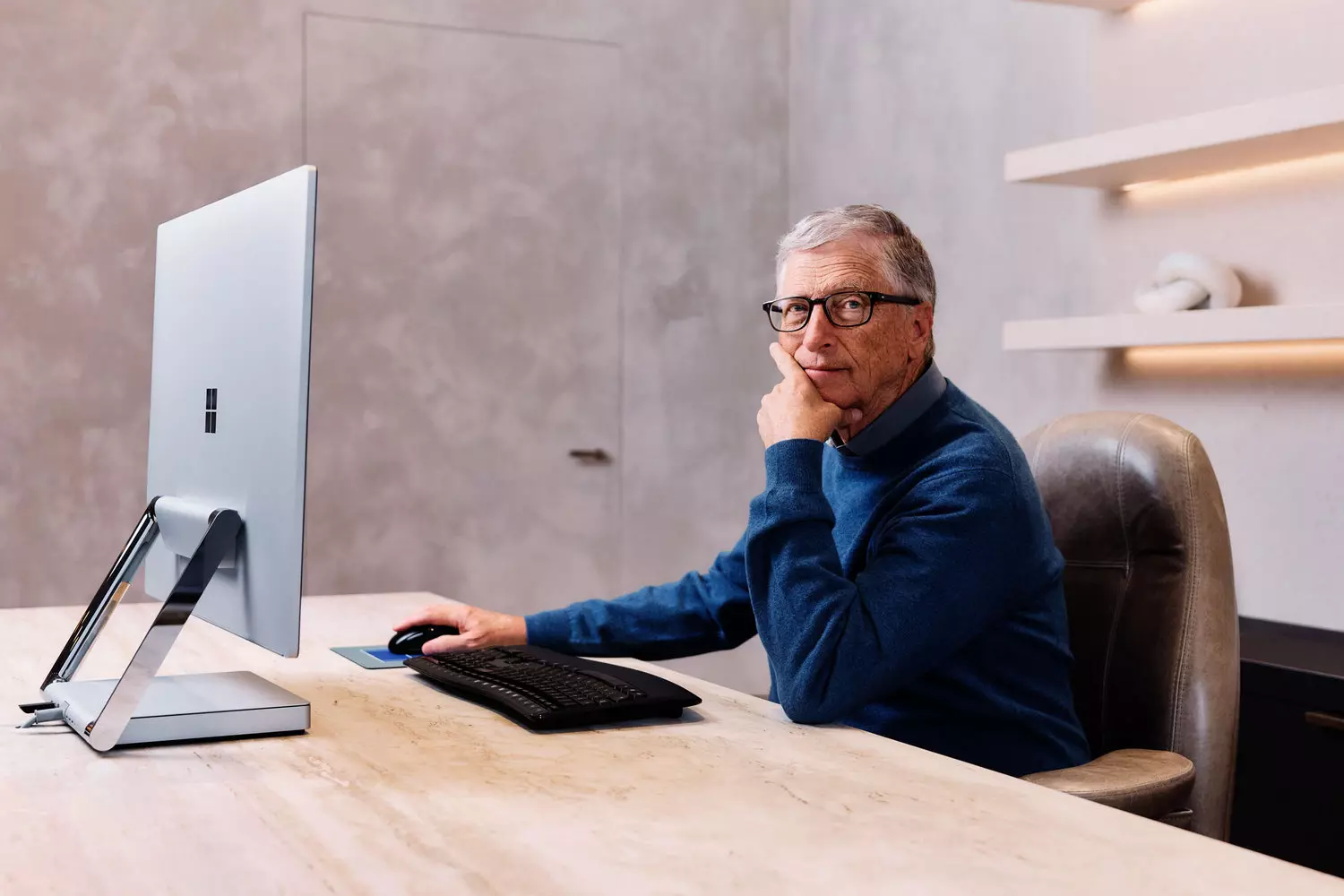
Not Just Microsoft: Behind the Mind of Bill Gates
We all know Bill Gates as the creator of a software empire and a philanthropist. But behind this public image lies a personality with quirks, unique habits, and actions that resemble plot twists in the biography of an eccentric genius. Discover the Bill Gates that business textbooks don’t cover.
- 01. Phenomenal memory tested by a taxi driver
One of Gates’ most remarkable traits is his photographic memory. There is a story of how he could flawlessly spot errors in the code of dozens of Microsoft programmers just by scanning the screen. Former colleagues also love to tell a story about how Gates, in another country, took a taxi and, a year later, returned and recognized the same driver among hundreds of others. - 02. Unusual hobby: reading… health inspection reports
Besides his well-known habit of reading about 50 books a year, Gates has a far more exotic hobby. While traveling, he enjoys studying reports from the World Health Organization and local health authorities about disease outbreaks. For him, this is not just boring statistics but a real detective story, allowing him to “see” invisible battles happening daily around the world. - 03. “Parking wars”
In Microsoft’s early years, Gates had an unusual habit: he regularly parked in disabled spots. Colleagues perceived this as arrogance. Gates later explained it as youthful bravado and a desire to challenge norms, but eventually had to give up this habit under pressure from his team. - 04. Predicting AI in a 1997 podcast
In a 1997 interview, when the Internet was still in its infancy, Gates discussed the future of artificial intelligence. He predicted the appearance of a “digital assistant” that would know your interests, filter information, and control devices — almost exactly describing modern voice assistants like Siri and Alexa, decades before they appeared. - 05. Unusual condition in the prenuptial agreement
In the prenuptial agreement with Melinda French (now Melinda Gates), there was a clause that shocked many: Bill committed to spending a certain amount of uninterrupted time with his wife — two vacations per year and at least one evening per week dedicated solely to family. For a workaholic like Gates, this was a serious and conscious commitment. - 06. Love for McDonald’s and soda
Contrary to the “healthy” billionaire image, Gates in his youth was a true fan of fast food, especially McDonald’s. His passion for soda was so strong that his Microsoft office had a dedicated fridge filled with Diet Coke, which he could drink by the liter while programming. - 07. “Anti-management” according to Gates
In Microsoft’s early years, Gates practiced an unusual management style. He would walk through the office and suddenly start asking employees difficult technical questions. Those who couldn’t handle the “interrogation” were often reassigned. This approach created a unique corporate culture valuing only the most competent. - 08. Collection of rare scientific works
Besides his love of reading, Gates collects unique scientific documents. His collection includes an original notebook with Leonardo da Vinci’s notes, which he paid $30 million for, as well as rare works by Michael Faraday and other great scientists. - 09. “Secret” kitchen at home
At Gates’ famous Medina residence, there is a fully equipped kitchen that is almost never used. It serves as a backup in case the main kitchen fails while preparing meals for numerous guests. Even in daily life, Gates plans for contingencies. - 10. Unexpected hobby: chemistry experiments
In his garage, Gates has a full chemistry lab where he occasionally conducts experiments. He is particularly interested in water purification and new material synthesis, a hobby directly related to his philanthropic projects. - 11. “Forbidden” topics
When speaking with Gates, there is an unspoken list of topics he refuses to discuss. These include details of his divorce, personal relationships with his children, and certain business aspects he considers “closed.” - 12. Unusual bedtime ritual
Every evening, regardless of circumstances, Gates spends exactly one hour washing dishes. He considers this a meditative process that helps “reset” his mind after a workday. This habit dates back to his time in Harvard dormitories. - 13. “Curse” of startups
Gates believes in a kind of “curse”: if he publicly praises a startup, it is highly likely to fail. Because of this superstition, he has avoided publicly commenting on promising companies, especially in technology. - 14. Math on napkins
During business dinners, Gates often gets distracted and starts solving math problems on napkins. He is particularly fascinated by combinatorics and probability theory. Colleagues joke that Microsoft restaurants are the only places in the world where you can find napkins with theorem proofs. - 15. Silent days
Since 2010, Gates observes “silent days” — once a month he spends a whole day without speaking, communicating only in writing. According to him, this helps “reset” the speech centers of the brain and sharpen other senses. - 16. Collection of failures
In a special safe, Gates keeps artifacts of his major failures: antitrust trial protocols, the first Microsoft Kin smartphone, and other “failures.” He calls this his “lesson collection” and periodically reviews it before making important decisions. - 17. Impostor syndrome
Despite his success, Gates still struggles with impostor syndrome. Each morning he spends 10 minutes on a “confidence ritual,” reading positive feedback about his work to prepare for a productive day. - 18. Genetic anomaly
In 2018, it was discovered that Gates has a unique genetic feature — an increased density of dopamine receptors. Neurologists believe this may explain his phenomenal ability to concentrate and handle multiple tasks simultaneously. - 19. Happiness algorithm
Gates developed a personal “happiness formula,” reviewed annually. It includes 37 parameters — from books read to time spent with family. In recent years, the top priority has been the “humanity usefulness coefficient.” - 20. “Blind spot” in knowledge
Despite encyclopedic knowledge of technology and science, Gates admits he is completely unaware of pop culture. He cannot name a single contemporary music hit and often mixes up popular TV shows, which often becomes a joking topic during interviews.
This portrait, pieced together from a mosaic of little-known details, shows that Gates’ genius is not just code and billions, but a unique, sometimes eccentric blend of obsession, wit, and incredible mental power.

Travel the Path of Innovation with American Butler
Bill Gates has become the embodiment of the American Dream. His story is not just a biography, but an example of how opportunity, hard work, and courage can change not only one’s own life but the entire world. He proved that even from a garage, one can build an empire if they believe in an idea.
The story of Bill Gates is a reminder to each of us: the future is created not by machines, but by people with vision, passion, and purpose. He didn’t just build Microsoft — he showed how a single idea can inspire an entire generation.
If you want to see where the history of the digital revolution began, embark on a journey to the places connected to Bill Gates and the rise of Microsoft.
Start in Seattle — the city where Gates was born and raised. Everything here is steeped in the spirit of innovation: the Microsoft campus in Redmond, the Living Computer Museum founded by Paul Allen, and Gates’ iconic lakeside home, a symbol of a technological future.
Next, your route may take you to Silicon Valley — the heart of global technology. This is where ideas turn into reality: from the legendary garages where startups were born to the campuses of Google, Apple, and Meta. Here, you can literally feel the energy of innovation — the same energy that once inspired young Bill to create Microsoft.
With American Butler, you can follow in the footsteps of great minds, see where the history of the digital world was made, and immerse yourself in the atmosphere of discoveries that changed civilization. We organize personalized tours, comfortable transfers, professional guides, and premium service at every stage of the journey.
American Butler — this is not just tourism. It is a journey to ideas, inspiration, and the future.


































